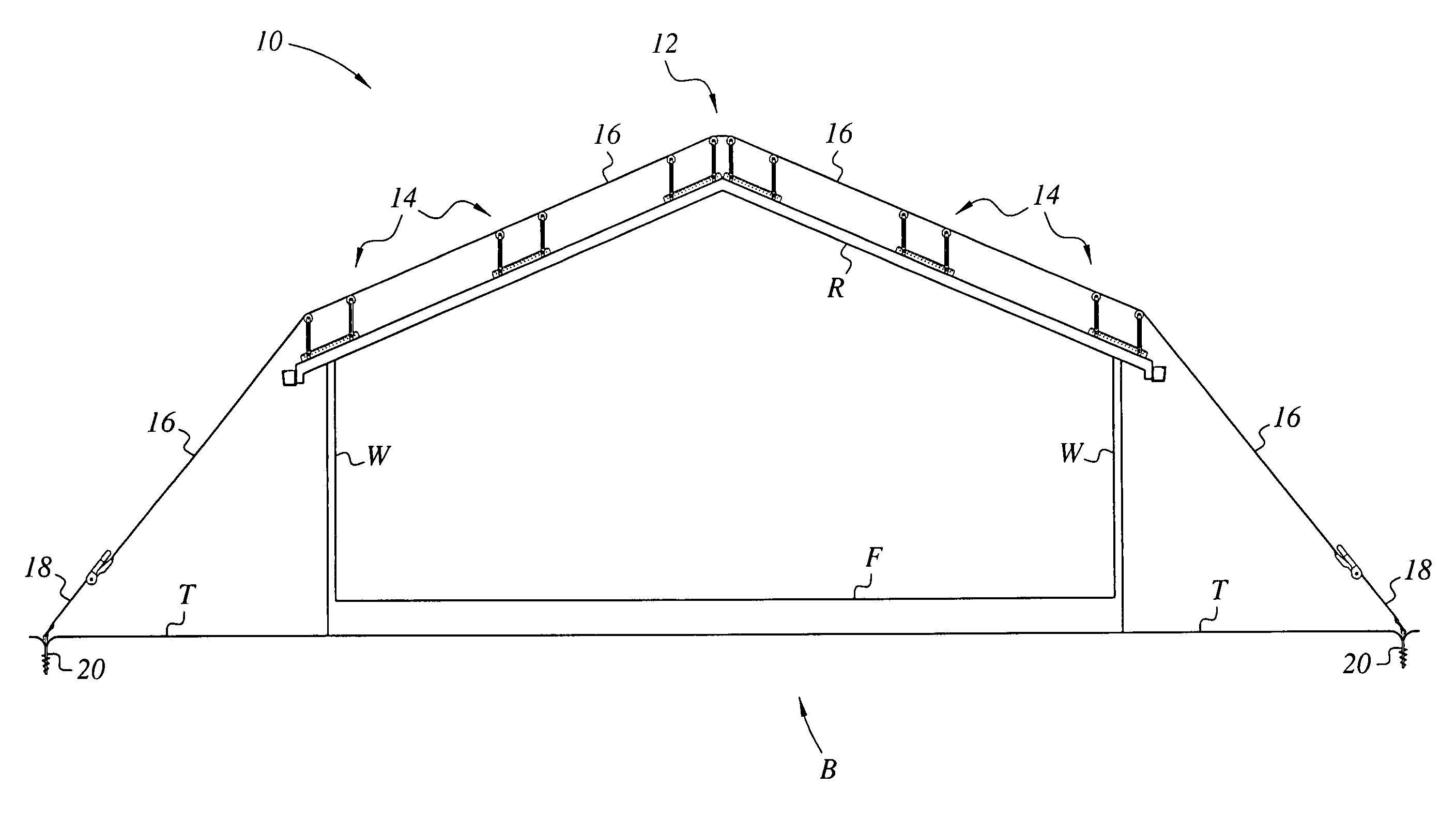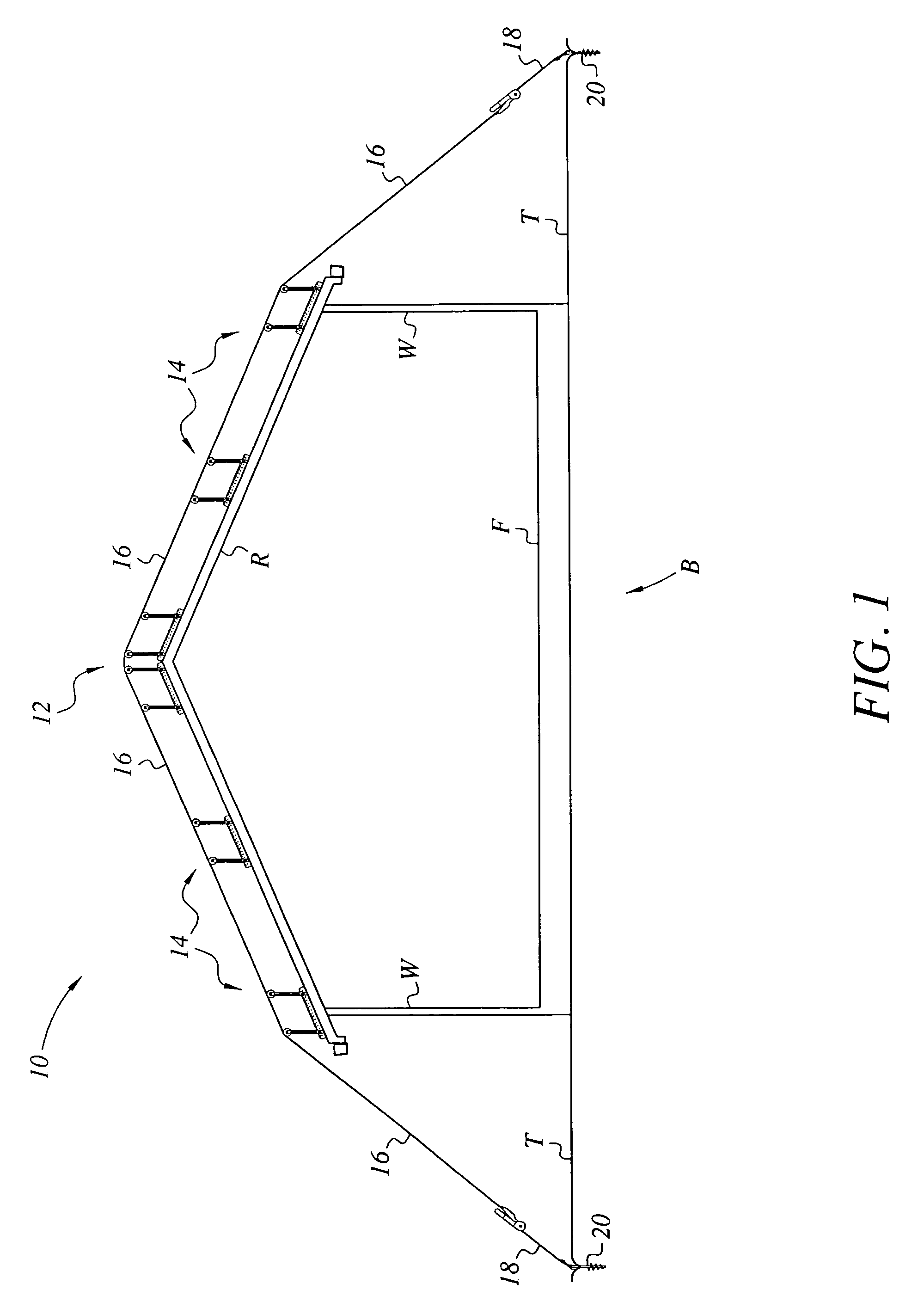Wind cap for buildings
a technology for buildings and wind caps, applied in the direction of building roofs, transportation and packaging, human health protection, etc., can solve the problems of weakened underlying structures, weakened wind damage to building structures, and increased exposure to further damag
- Summary
- Abstract
- Description
- Claims
- Application Information
AI Technical Summary
Benefits of technology
Problems solved by technology
Method used
Image
Examples
Embodiment Construction
[0056]The present invention comprises an apparatus for securing the roofs of building structures against high winds, as may occur in severe storms and hurricanes. The typical roof structure is secured to the underlying structure primarily due to its weight resting upon the structure, with only a relatively few nails securing the trusses and lower rafter ends of the roof to the underlying top plates in a typical frame building construction. However, the typical gabled roof configuration found in most smaller structures is capable of acting as a crude airfoil, and can generate enough lifting forces in high winds to cause the entire roof to separate from the underlying structure. In other cases, winds may generate sufficient force to lift portions of the roof sheathing from the underlying rafters.
[0057]The present invention provides a solution to this problem by means of a series of tiedown straps, each of which passes over a series of base plates removably placed upon the roof. The en...
PUM
 Login to View More
Login to View More Abstract
Description
Claims
Application Information
 Login to View More
Login to View More - R&D
- Intellectual Property
- Life Sciences
- Materials
- Tech Scout
- Unparalleled Data Quality
- Higher Quality Content
- 60% Fewer Hallucinations
Browse by: Latest US Patents, China's latest patents, Technical Efficacy Thesaurus, Application Domain, Technology Topic, Popular Technical Reports.
© 2025 PatSnap. All rights reserved.Legal|Privacy policy|Modern Slavery Act Transparency Statement|Sitemap|About US| Contact US: help@patsnap.com



